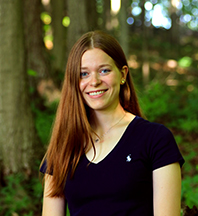Week of January 21, 2024 – January 27, 2024
by Elizabeth Suzedell, Environmental Educator
Have you ever looked up close at a snowflake? When a weak low-pressure system came through the area on Tuesday, Baltimore Woods got a little over an inch of light and fluffy snow, full of spectacular snowflakes. As I was getting out of the car in the morning, I noticed some “perfect” snow crystals falling and sticking to the windows. I caught some on my coat to get a closer look at the beautiful, six-sided dendrites (the type of snowflake with branches). I disappointingly thought, “Of course we don’t have a Snow Science lesson today!”
This winter, I had the chance to observe some tiny snowflakes with many Syracuse City 2nd grade classes during our Baltimore Woods Nature in the City program. In the beginning of the lesson, each student made snowflake catchers with black felt fabric, which provides a good texture to catch snowflakes on. At the end, we would go outside to try to capture some falling snow. Their excitement and amazement when the kids see a snowflake up close through their magnifying glasses is contagious. I really hope some of them got to see the great snowflakes that we got on Tuesday.
During another activity in the lesson, students learn about Wilson “Snowflake” Bentley- a snow-loving meteorologist who was the first person to take photographs of snowflakes. After looking at several sheets of his photos with the students (he took thousands of them), they learn that no two snowflakes are exactly alike. Even if some of the snowflakes looked the same at first glance, they discover that each of them is unique, with slightly more, less, bigger, or smaller structures than the other.
I love talking about anything that has to do with the weather, so it’s hard for me to not go into more depth about why every snowflake is unique with 2nd graders. A snowflake starts with water vapor that condenses onto a tiny dust particle or other aerosol, becoming a supercooled droplet of water. Eventually, it freezes, turning into a hexagonal ice crystal because of the bent structure and polarity of water molecules. As the crystal moves through the atmosphere, it picks up more water vapor which condenses and freezes onto it. The way the crystal grows depends on the temperature and humidity levels of the air in which it’s traveling. Because each individual snowflake takes a slightly different path, each of them encounters different levels of temperatures and humidity, resulting in different patterns of growth, and therefore, unique snowflakes.
Something special that the kids often tell me is that we are all different, just like snowflakes. I always leave those lessons smiling. Even if you dislike the cold winter (like me), take a moment next time it snows to look up close at the snowflakes falling on your coat. I promise you’ll be amazed by their beauty, and maybe reminded about the beauty within you and all of us!


